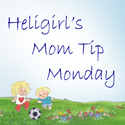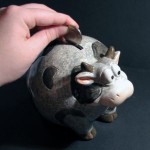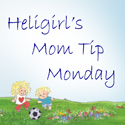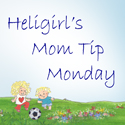 Kids will fluctuate between equilibrium and disequilibrium, about every six months.
Kids will fluctuate between equilibrium and disequilibrium, about every six months.
Simply knowing about this phenomenon and, as such, being prepared to weather the storm, can make pushing through tough periods of resistence and poor behavior a little easer.
In continuing to research why my little Sweetness, who officially turned 3 ½ this weekend, is making my life a living hell, I found the following text, put together by JennyAnn Wheeler, to be particularly helpful. I’d heard of this in my early positive discipline classes, but had not experienced it in such a distinct manner as I am now.
I found JennyAnn’s descriptions and advice so good that rather than parapharase her, I’d like to quote her directly:
Disequilibrium – A predictable developmental period of acquiring new skills, change and growth, usually accompanied by intense behavioral changes.
Equilibrium A predictable developmental period of calm in which a child practices newly acquired behaviors.
Children move through stages of equilibrium and disequilibrium roughly every six months. Although temperamental differences will affect how intense the behavioral changes are, these stages are generally predictable.
When a child is in disequilibrium, she is hard at work learning new skills. It is a period of huge intellectual and emotional growth. She will be more intense and have more behavior disruptions. Things that didn’t bother her a few months ago may now be very disruptive. Behaviors such as sleep disruptions, transition difficulty, eating difficulty, aggressive behaviors, and separation anxiety will intensify or will become disruptive.
Tantrums will increase, and your child will seem less resilient.
When a child is in equilibrium, he is busy practicing all of the skills he acquired during disequilibrium. He is easier to get along with, and seems “at peace” or “calmer”. He will sleep better, eat better and generally have an easier time interacting with the world.
Knowing where your child is in terms of dis/equilibiurm can help you get creative about what you expect from your children behaviorally. Try to make choices that will support rather than aggravate the stage your child is in.
Avoid places that your child will have difficulty behaving appropriately in.
Restaurants, movies, grocery stores are usually very difficult for the child in disequilibrium.
Get a lot of self care during disequilibrium. The more resilient you are, the better able you will be to deal with intense behaviors.
What great advice. If you’ve not experienced this directly yourself, bookmark this for future reference. This can go on well in to the teen years (and sometimes those teen years will feel like one big disequilibrium).
I’m now off to take JennyAnn’s advice and so a little self care while the kids are in preschool.
Calgon, take me away!

















{ 1 comment }
Ah yes! Those “half” years are often difficult. And yes, when you know what’s going on, it’s half the battle. Hang in there- it gets better (and then worse, and better…).
Susan recently posted: Seeing The Connections Again